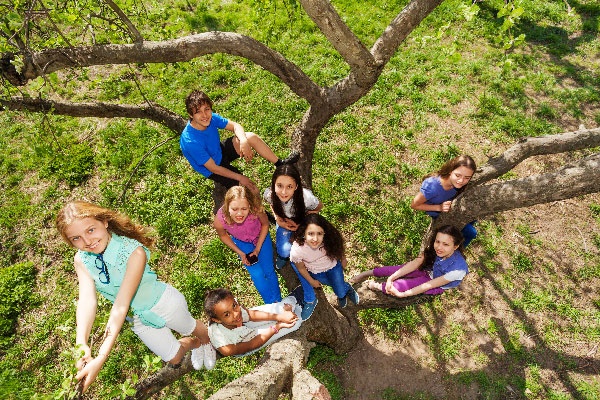
No need to ban tree climbing in schools says WorkSafe
Guess what? It’s not true. The law is not about banning everything and removing all risk at any cost. It’s about identifying risks and doing what is sensible to manage those risks in proportion to the seriousness of the consequences if anything goes wrong.
Take tree climbing at school for example. Kids have always climbed trees, and some of them have fallen and hurt themselves. I doubt that will change any time soon. The law has long since required schools to manage risks but we’ve not prosecuted just because a child fell out of a tree. And I don’t expect that to change either under the new law.
Why not? Because it’s not reasonable to expect schools to stop kids being kids and taking low-level risks.
What might be reasonable is to expect the school to make sure that they take down any trees or branches that are dead and rotting. Or that they prevent kids from climbing trees with limbs that extend out over a public road. But your average tree in a playing field? That’s not the sort of risk that WorkSafe New Zealand is interested in.
WorkSafe focuses on areas where the most harm occurs – construction, agriculture, manufacturing, forestry – and where there’s the potential for major catastrophes. Unsurprisingly, schools and community events do not figure heavily in workplace injury statistics. So while schools are covered by the same law, with the same legal duties to keep people safe and healthy, they are not a problem area.
How then should principals and boards of trustees approach the new health and safety law? The same way anyone else should – by doing their research calmly and methodically and with a sense of perspective.
Schools should already have processes in place for identifying and managing risk – that’s been a legal requirement for decades. The new law does not mean schools are suddenly responsible for a whole new list of risks. Be wary of anyone who tells you that it does.
What the new law does is clarify who is responsible for managing risks, including in situations where there is more than one organisation involved (such as during school field trips or education outside the classroom). In these situations, the school must communicate with, for example, the rock-climbing company and ensure that risks are being managed appropriately by whomever is best placed to do so.
The new law also places a duty of due diligence on the board and principal to ensure that there are proper health and safety polices and processes in place, that they are properly resourced and followed on day to day basis.
That does not mean individual board members are automatically responsible for anything that goes wrong – but they might have questions to answer if there was no process in place to ensure that the school checked that the rock-climbing operator it used was appropriately qualified and competent. It’s worth noting too that individual board of trustee members are explicitly excluded from being prosecuted if they fail in their due diligence duty.
What should schools be doing right now? School boards can make health and safety a standing item on their agendas, just as they already do for finance, curriculum and building matters. Its important trustees are actively engaged. This isn’t difficult and it will help principals make sure they have the resources and support to do the right thing.
It would be a good idea to review existing systems and processes to make sure the important stuff is being taken care of i.e. traffic management on school grounds, education outside the classroom, and dealing with contactors doing work on school grounds.
So don’t get distracted by the hype or rattled by the myth-spinners. If you need reliable information, both the Ministry of Education and WorkSafe have resources specifically targeted at schools to help them come to grips with their responsibilities.
But whatever you do, don’t sweat the small stuff. No health and safety policy is needed to cover paper cuts or knees scraped during netball.
The much-delayed English draft curriculum is now out for consultation, generating discussion from teachers.
Research from AUT demonstrates arts, culture and recreation have positive impacts on all aspects of…
How effective has the school phone ban been in achieving its aims? Researchers from the…
School camps and excursions deliver hands on learning experiences, helping to consolidate classroom learning.
Innovations in AV technologies present new opportunities to engage with students. We look at how…
A new report from the University of Auckland’s Our Voices Project asks young people what…
This website uses cookies.